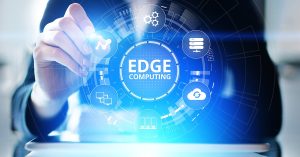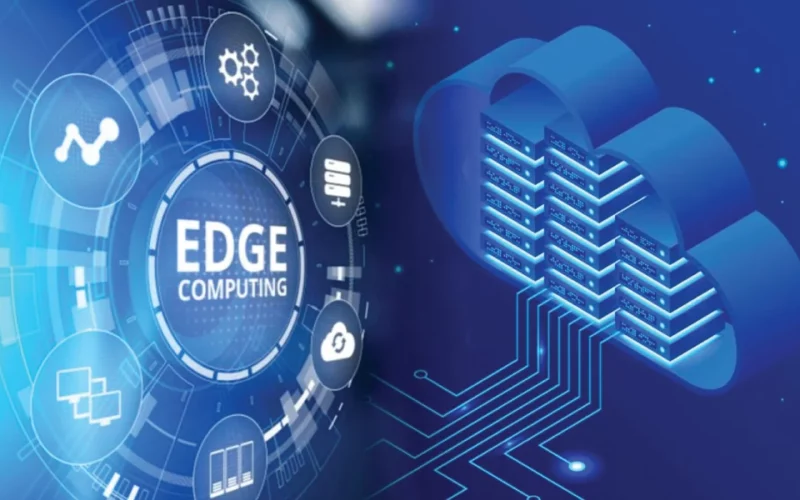How Edge Computing is Changing the Internet
The internet has become the backbone of our digital age, enabling communication, entertainment, business, and much more. As our reliance on the internet grows, the demand for faster, more efficient, and secure systems has increased. One revolutionary technology meeting these demands is Edge Computing. This approach is reshaping the way data is processed, stored, and delivered. Let’s dive deep into how Edge Computing is changing the internet and redefining its role in our lives.
1. What is Edge Computing?

Edge Computing is a distributed computing framework where data processing occurs closer to its source, rather than relying entirely on centralized servers or data centers. Traditionally, when you interact with a cloud-based system, your data travels to a distant data center, is processed, and then sent back to you.
Edge Computing changes this by enabling data analysis and decision-making to occur at or near the “edge” of the network, such as on local devices or nearby servers. This localized processing reduces latency, enhances speed, and minimizes the load on central servers. For example, in smart homes, devices like thermostats or security cameras equipped with edge capabilities can process data locally to respond faster to user commands.
2. The Traditional Internet Model and Its Limitations
The traditional internet operates on a centralized model, where all data is sent to large cloud servers for processing. While this model has supported the exponential growth of online activities for years, it struggles with modern demands. Here’s why:
- Latency Issues: Centralized systems introduce delays as data must travel to and from distant servers. For real-time applications, even a delay of milliseconds can be problematic.
- Bandwidth Overload: The amount of data generated by billions of connected devices, especially IoT (Internet of Things), can overwhelm networks.
- Scalability Challenges: As the number of connected devices grows, centralized systems face challenges in scaling to meet these demands.
Edge Computing directly addresses these limitations by distributing computational tasks closer to the source of data generation.
3. How IoT is Driving the Growth of Edge Computing
The Internet of Things (IoT) has been a key driver behind the adoption of Edge Computing. IoT devices, ranging from wearable fitness trackers to industrial sensors, generate vast amounts of data. Managing and analyzing this data through centralized cloud systems would result in delays, higher costs, and network congestion.
With Edge Computing, IoT devices can process data locally and only send relevant insights to the cloud. For example:
- Wearables: Fitness trackers can analyze heart rate data on-device and send summaries to cloud apps.
- Smart Cities: Traffic management systems can process real-time data at the edge to optimize traffic flow without overloading central servers.
- Industrial IoT: Sensors in factories can detect anomalies and trigger immediate actions locally, ensuring minimal downtime.
4. Reducing Latency: A Game-Changer for Real-Time Applications
One of the biggest advantages of Edge Computing is its ability to reduce latency. Real-time applications like online gaming, video conferencing, autonomous vehicles, and healthcare monitoring require near-instantaneous data processing.
For example, in autonomous vehicles, the delay caused by sending data to a distant server could lead to life-threatening consequences. With Edge Computing, these vehicles can process data locally, enabling split-second decisions.
Similarly, telemedicine systems use Edge Computing to monitor patients in real-time, ensuring that critical alerts are generated without delay.
5. Bandwidth Efficiency: The Hidden Advantage
Data transmission over the internet requires significant bandwidth, especially for applications like video streaming, remote work, and IoT networks. Edge Computing helps reduce the amount of data that needs to be transmitted. Here’s how:
- Local Data Processing: Devices analyze data locally and only send processed or relevant information to the cloud. For example, a security camera can use Edge Computing to detect motion and only upload recordings when motion is detected, rather than continuously streaming footage.
- Content Delivery Networks (CDNs): Edge Computing powers CDNs, which store content closer to users. This reduces the need for data to travel long distances, improving speed and reducing bandwidth usage.
As a result, Edge Computing not only saves costs but also reduces the environmental impact of data transmission.
6. Transforming Key Industries with Edge Computing
Edge Computing is not limited to a single industry; its applications span across multiple sectors, transforming how they operate. Here are some key examples:
Healthcare
Edge Computing enables real-time patient monitoring, where wearable devices and bedside monitors analyze data locally. For instance, in critical care units, edge-enabled systems can alert medical staff instantly when a patient’s vitals show signs of distress.
Manufacturing
In smart factories, Edge Computing allows real-time monitoring of equipment to predict failures and optimize production lines. Machines equipped with edge devices can detect anomalies, reducing downtime and maintenance costs.
Retail
Retailers use Edge Computing to enhance customer experiences. In-store sensors and cameras analyze shopper behavior to deliver personalized offers or improve store layouts.
Energy
The energy sector benefits from edge systems by monitoring power grids and renewable energy sources. Local processing enables faster responses to outages or inefficiencies.
7. Enhanced Data Security and Privacy

In an era where data breaches and cyberattacks are on the rise, Edge Computing offers significant security advantages. By processing data locally, sensitive information is less exposed to vulnerabilities associated with centralized systems. For example:
- Personal Data Protection: Data from devices like smart home systems or health trackers stays within the local network, reducing the risk of interception.
- Regulatory Compliance: Edge Computing helps organizations comply with privacy regulations like GDPR by keeping user data within specific geographic regions.
While Edge Computing reduces certain risks, securing edge devices themselves is crucial to prevent unauthorized access.
8. The Synergy Between Edge Computing and 5G
The deployment of 5G networks is accelerating the adoption of Edge Computing. 5G offers faster speeds and lower latency, but its true potential lies in its ability to support distributed systems like Edge Computing.
Applications such as augmented reality (AR), virtual reality (VR), autonomous vehicles, and smart cities rely heavily on the low-latency and high-bandwidth capabilities of 5G combined with edge technology. Together, they enable seamless, real-time interactions that were previously impossible.
9. Challenges in Implementing Edge Computing
Despite its transformative potential, Edge Computing faces several challenges:
Scalability
Managing thousands of edge devices and nodes can be complex. Ensuring these systems work seamlessly across different environments requires robust infrastructure.
Standardization
The lack of universal standards for Edge Computing creates compatibility issues between devices and platforms, hindering widespread adoption.
Security Risks
While Edge Computing improves data privacy, edge devices can become targets for cyberattacks. Securing these devices is essential to prevent breaches and maintain trust.
Cost
Setting up and maintaining edge infrastructure can be expensive, especially for small businesses. However, as the technology matures, costs are expected to decrease.
10. The Future of Edge Computing and the Internet
Edge Computing is not just a trend; it’s a fundamental shift in how we design and use the internet. As more devices connect to the internet and generate unprecedented amounts of data, the demand for Edge Computing will grow.
Key Predictions for the Future:
- Integration with AI: Artificial Intelligence (AI) and Machine Learning (ML) algorithms will become more embedded in edge systems, enabling smarter, faster decisions.
- Decentralized Networks: Edge Computing will contribute to the rise of decentralized networks, reducing reliance on centralized cloud systems.
- Sustainability: By reducing bandwidth usage and improving efficiency, Edge Computing will play a role in creating more sustainable digital ecosystems.
The future internet will likely be a blend of centralized cloud systems and decentralized edge nodes, offering the best of both worlds—scalability and speed.
Conclusion
Edge Computing is revolutionizing the internet, addressing the limitations of traditional centralized systems, and paving the way for a faster, more efficient, and secure digital future. By processing data closer to its source, this technology reduces latency, saves bandwidth, and enhances real-time decision-making. From transforming industries like healthcare and retail to enabling IoT devices and 5G networks, Edge Computing is becoming the backbone of modern innovation.
As we look ahead, Edge Computing will continue to evolve, integrating seamlessly with emerging technologies like artificial intelligence and decentralized networks. While challenges such as security and scalability remain, the benefits far outweigh the hurdles. Businesses, governments, and individuals will increasingly rely on Edge Computing to meet the demands of a data-driven world.
The internet is no longer just about connecting people and devices—it’s about doing so intelligently, efficiently, and securely. Edge Computing is the driving force behind this transformation, shaping a smarter, more connected future for everyone.










